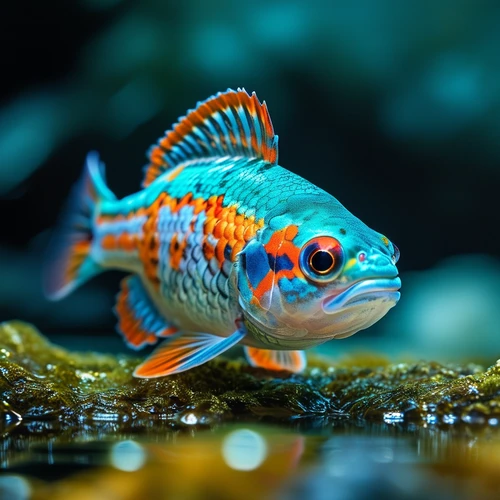The disruption of functional protein production in cells, known as proteostasis, is a hallmark of aging and neurodegeneration. This issue particularly affects brain cells, leading to the formation of protein aggregates common in neurodegenerative diseases.
A recent study published in Science by Stanford researchers has uncovered key events in the decline of proteostasis during brain aging, based on research involving turquoise killifish.
The discovery sets the stage for developing therapies to combat and prevent neurodegenerative diseases as well as age-related cognitive decline.
"We know many processes deteriorate with age, but we don't fully understand why this happens at a molecular level," said study author Judith Frydman, the Donald Kennedy Chair in the School of Humanities and Sciences at Stanford. "Our research offers a mechanistic explanation for the increased protein aggregation and dysfunction observed during aging."
The turquoise killifish (Nothobranchius furzeri) is known for its vibrant colors and ability to thrive in temporary freshwater pools in African savannas. As the shortest-lived vertebrates bred in captivity, killifish exhibit rapid aging and provide an ideal model for studying accelerated aging.
The researchers conducted an extensive study of proteostasis in the brains of aging killifish. They compared young, adult, and old fish, examining various factors such as amino acid concentrations, transfer RNA levels, messenger RNA (mRNA), proteins, and more.
Proteostasis maintains a balance between protein synthesis, degradation, and preventing harmful protein aggregations within cells. Dysfunctional proteostasis is linked to aging hallmarks and neurodegenerative diseases like Alzheimer's disease.
Frydman's laboratory investigates how cells maintain proteostasis, especially focusing on the effects of aging in simple organisms like yeast and roundworms. This new study confirms that similar aging processes occur in more complex vertebrates like killifish—potentially extending to humans as well.
"Aging manifests various problems across mechanistic, cellular, and organ levels," Frydman said. "However, all these processes are protein-mediated."
The team identified the disruption at a critical stage of protein synthesis called translation elongation. During this phase, ribosomes translate mRNA into proteins by adding amino acids sequentially. In aging fish brains, the researchers observed stalling and collisions of ribosomes, which resulted in reduced protein levels and aggregation.
"Our findings show that changes in ribosome movement along mRNA impact protein homeostasis significantly," said Jae Ho Lee, co-lead author who conducted this research as a postdoctoral scholar at the Frydman lab. He is now an assistant professor at Stony Brook University.
This discovery also explains "protein-transcript decoupling," where changes in mRNA levels no longer correlate with protein levels during aging. Many affected proteins are crucial for genome maintenance and integrity, which decline with age.
"Understanding why protein production becomes faulty with age offers a rationale for other aging-related malfunctions," said Frydman. "Identifying the root cause is essential to addressing the problem effectively."
The next step for researchers will be to explore how ribosome dysfunction affects age-related neurodegenerative disorders in humans, and whether treatments targeting translation efficiency or ribosome quality can restore proteostasis and delay cognitive decline.
"This research provides new insights into protein biogenesis, function, and homeostasis while offering a potential target for intervention in aging-related diseases," said Lee.
Additionally, the research team is investigating factors contributing to age-related cognitive impairment and how modifying these processes could influence longevity across different species.


